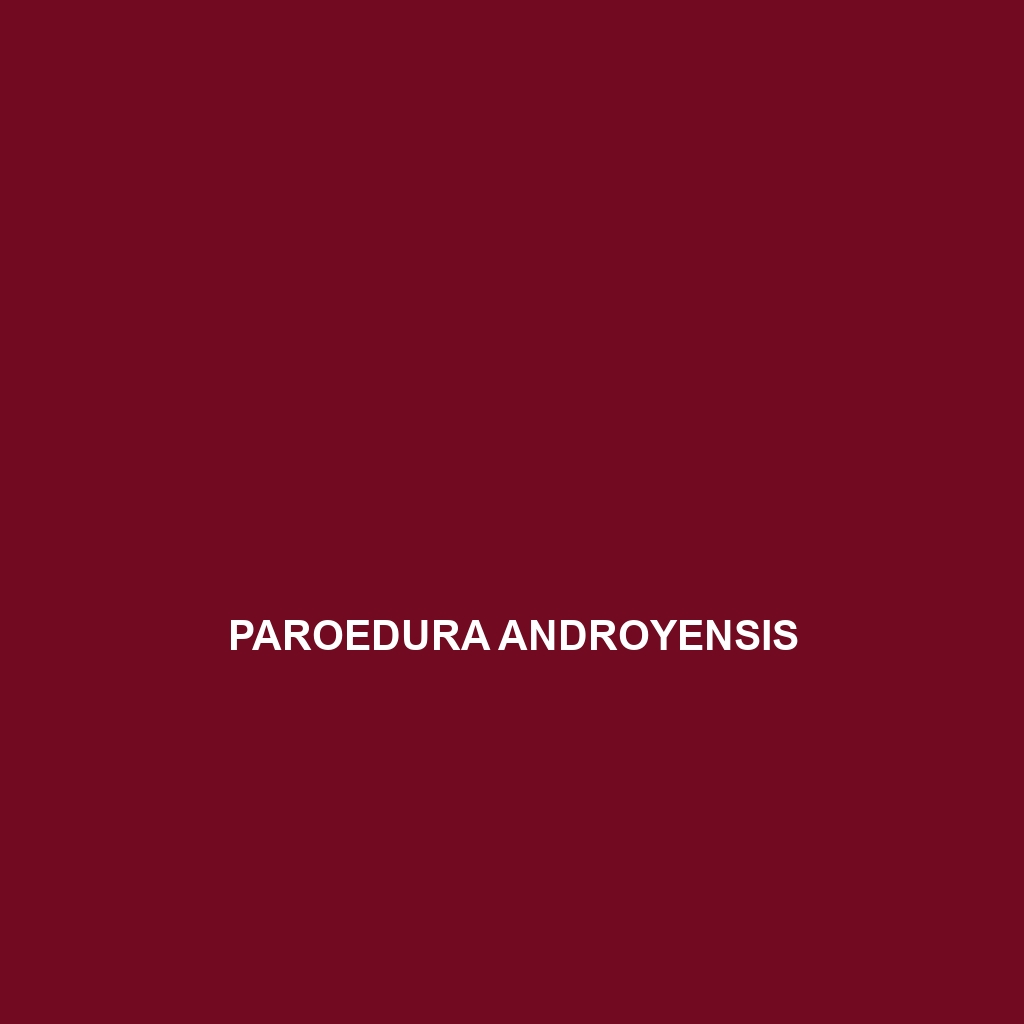Common Name
Paroedura androyensis
Scientific Name
Paroedura androyensis
Habitat
Paroedura androyensis, commonly known as the Androy gecko, is primarily found in the arid and semi-arid regions of Madagascar, particularly in the southern part of the island. This species thrives in various habitats, including scrublands and rocky outcrops within the dry forests. The climate in these areas is characterized by a hot season followed by a cooler, dry season, creating a unique ecosystem where Paroedura androyensis can adapt and thrive. The gecko prefers habitats with ample shelter, such as crevices and under rocks, which provide protection from predators and environmental extremes.
Physical Characteristics
The Androy gecko is relatively small, typically reaching lengths of about 20-25 cm. Its body is sleek and elongated, allowing for agile movements among the rocky terrains it inhabits. The coloration of Paroedura androyensis ranges from light brown to grey, often featuring intricate patterns that mimic the textures of its surroundings. These markings serve as an effective camouflage against predators. A distinctive feature of this species is its large, expressive eyes, which enhance its night vision, as it is primarily nocturnal.
Behavior
Paroedura androyensis exhibits fascinating behaviors, particularly its nocturnal habits. During the night, these geckos become active, foraging for food and interacting socially with others of their species. Although typically solitary, they may engage in brief social interactions during the mating season, which occurs in the warmer months. Their ability to blend seamlessly into their environment allows them to ambush prey and evade predators effectively. Additionally, their unique method of locomotion, which includes a combination of stealthy climbs and quick dashes, aids in their survival.
Diet
Paroedura androyensis is primarily an insectivore, feeding on a variety of insects such as crickets, beetles, and moths. This gecko has developed feeding patterns that maximize its foraging efficiency, often hunting at dusk and dawn when insect activity peaks. Occasionally, Paroedura androyensis may also consume small fruits, classifying it as a selective omnivore. Its keen sense of sight and excellent climbing abilities help it locate and capture prey effectively, especially in the rocky terrains it inhabits.
Reproduction
The reproductive cycle of Paroedura androyensis begins with a mating season that occurs during the warmer months. After a gestation period of approximately 30 days, the female lays a clutch of 1-3 eggs, typically in hidden locations to protect them from predators. The eggs incubate in warm, stable conditions for about 60-70 days before hatching. Once hatched, the juvenile geckos are self-sufficient and begin foraging for food almost immediately. Parental care is minimal, as the young are equipped for independence from birth.
Conservation Status
The conservation status of Paroedura androyensis is currently classified as Vulnerable by the International Union for Conservation of Nature (IUCN). The primary threats to this species include habitat destruction due to agricultural expansion and climate change. Conservation efforts focused on protecting Madagascar’s unique ecosystems are critical for the survival of Paroedura androyensis. Several NGOs are working alongside local communities to establish protected areas and promote sustainable land use practices.
Interesting Facts
One unique aspect of Paroedura androyensis is its ability to regrow its tail if lost due to predation attempts. This adaptation enhances its survival by allowing it to escape predators, while the regrown tail helps maintain balance and functionality. Furthermore, the gecko’s coloration can vary significantly between individuals, making it a visually diverse species within its habitat. Their impressive camouflage capabilities are among the most advanced in the reptile world.
